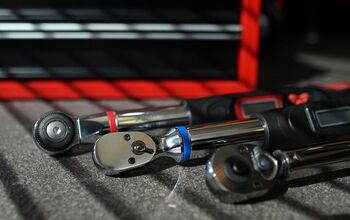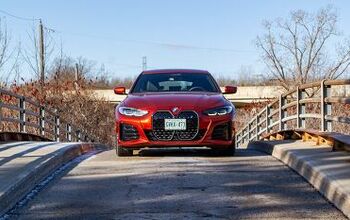Is Your Electric Vehicle at Risk of Bricking? Know the Facts

The recent stories of the Tesla Roadster “bricking” will likely cause owners of other electric vehicles to worry. We’ve managed to track down and get a comment about the measures in place that can prevent other EVs from becoming damaged like the Tesla.
A “bricked” car is a lot like a bricked gadget. It can’t and won’t turn on, and is essentially useless (unless you want to use it as a giant and expensive paperweight).
Tesla Roadster
The story is that an owner let his Roadster die and left it uncharged for two months. The car then couldn’t be turned on or started, or re-charged. When the car was taken for repairs it was found that it would cost $40,000 to fix the vehicle.
It’s stated several times in the Roadster’s owner’s manual not to leave the vehicle discharged for an extended period of time. Specifically: “Situations may arise when in which you must leave your vehicle unplugged for an extended period of time. If this is the case, it is your responsibility to ensure that the battery does not become fully depleted.” Lastly, “Over-discharge can permanently damage the battery.” While it’s clear that owner negligence caused this damage, some blame can be put on the manufacturer to have more safety measures to protect the vehicle.
Nissan Leaf:
Nissan states that the Leaf cannot be fully discharged “thanks to an advanced battery management system designed to protect the battery from damage. One element of the battery management system is a failsafe wall that stops the battery from reaching absolute zero state-of-charge, even after a period of unplugged storage,”Steve Yaegar, Nissan’s technology communications manager said.
Still there are some warnings in the Leaf’s manual that advises owners to take proper care of its battery. One of the more conspicuous warnings says: “Avoid leaving your vehicle for over 14 days where the Li-ion battery available charge gauge reaches a zero or near zero (state of charge)”
When pushed, Yaegar skirted the issue of what would happen to a Leaf if a user ignored that advice.
Chevrolet Volt
While the Chevrolet has a gas generator to help keep the battery charged, what would happen if the battery is discharged completely? Nothing really. Chevrolet spokesperson Robert Peterson told us “This isn’t an issue for the Volt. The Volt uses only 10.4 kW of its 16 kWh battery. The rest of the battery space serves as a buffer to prevent overcharging or deep discharging.”
Mitsubishi i-MiEV
In the i-MiEV’s warranty manual, Mitsubishi states that the standard warranty does not cover any damages to the Li-Ion battery resulting from “failure to keep the main drive lithium-ion battery charged during storage of the vehicle.”
John Arnone a representative from Mitsubishi, said that while the i-MiEV battery can be fully discharged, if left for a long period of time it will still be able to be recharged by the usual means.
Smart ED
It’s true that electric Smart cars aren’t really on sale (lease-only), a member of customer relations told us that the upcoming 2013 model shouldn’t encounter any issues if left discharged. She did warn us that it may take a bit longer to fully charge back up again though.
It’s clear that electric vehicles are in their infancy. Being able to drive about without paying for gas certainly is a huge benefit. However, potential electric car buyers are already concerned about cost, range anxiety and charge times. Looks like its time to add battery maintenance to that list of concerns.

Sami has an unquenchable thirst for car knowledge and has been at AutoGuide for the past six years. He has a degree in journalism and media studies from the University of Guelph-Humber in Toronto and has won multiple journalism awards from the Automotive Journalist Association of Canada. Sami is also on the jury for the World Car Awards.
More by Sami Haj-Assaad































Comments
Join the conversation
I wonder, why everyone talks about discharching to 0 percent or full discharge. The problem we are talking about is discharging BELOW 0%, which is normally called DEEP discharge. Also I think Model S & X will have much better protection against deep discharge of the battery. It simply needs to turn off all electronics, that drain the battery completely at a certain level. Then self-discharge should be so low, that it can be left unplugged for a few months without any damage. Of course then it needs to be transported to a charger, because it can't drive with its own power anymore. Another good thing would be to send the owner a SMS before the car goes to deep sleep, telling him/her to plug in the car within a calculated time, so the batteries won't be damaged. Also it does not make much sense, like the Roadster does, to show visual & acoustic warnings, which will drain the battery even more. Instead it should set some mechanical part or e-Ink display to: "Please recharge immediately to avoid damage to the battery pack" - then turn to deep sleep. In addition they could implement a "storage" mode, that uses less power for electronics as normally, but therefor may need an hour or so to drive again, i.e. to heat up the battery pack. Of course this would also be an argument for integrated solar panels, even if they only charge 2-3 miles on a sunny day, it should make deep discharge (bricking) practically impossible. Oh yes, everything was easier with the EV1 - it had NiMH batteries, they do not get big damage (if any), when they come to a deep discharge (like the other Ni-based batteries too, like NiCd or NiZn), also they do not need heating in the winter, and are much easier to manage. Of course it did only have a range of about 120 miles in average with its EV95 (ovonics) battery, but than it was back in 1999!! And capacity of NiMH also increased since then. But sadly Chevron-Texaco has bought patents on those batteries and no one is allowed to built larger NiMH-cells, this patent lasts until 2015, so there is need to use other battery technologies, like the different Lithium-Types, which are much more sensitive about over or under charching and temperature, so they need a much more complex BMS. (battery management system). We'll see what will happen in 2015, maybe the NiMH-battery then will still be used for some lower range/cheaper and/or more robust electric vehicles.
PS: As their cars have GSM integrated, they can also implement a remote deep-sleep option. So if you know, you forgot your Model S somewhere at 25% charge and don't know, when you come back (if it may take years) - send SMS to set it to deep sleep, so battery will remain charged for a very long time. Of course then you have the risk, that you can't drive, for example, if it is too cold, when you get there. But everything is better than bricking the battery. I wonder how long it will take for deep discharge (bricking), if the Model S automatically activates deep sleep at 5% of charge. Months? Weeks? Days? Maybe even a year or more?